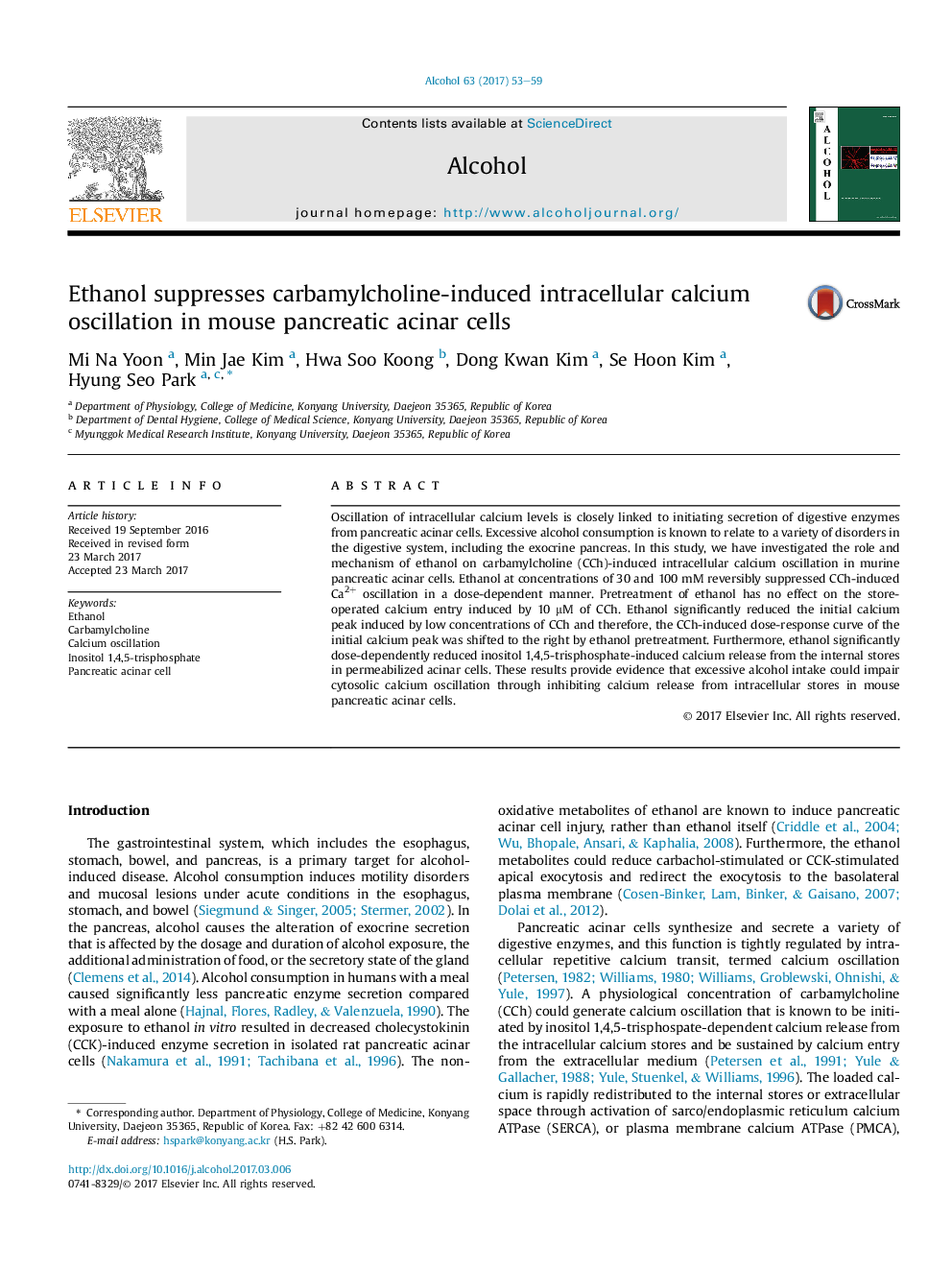| Article ID | Journal | Published Year | Pages | File Type |
|---|---|---|---|---|
| 5119692 | Alcohol | 2017 | 7 Pages |
â¢Excessive alcohol consumption is related to disorders in the digestive system, including the exocrine pancreas.â¢Ethanol reversibly suppressed CCh-induced Ca2+ oscillation in a dose-dependent manner.â¢The CCh-induced dose-response curve of the initial calcium peak was shifted to the right by ethanol pretreatment.â¢Ethanol reduced inositol 1,4,5-trisphosphate-induced calcium release from internal stores.
Oscillation of intracellular calcium levels is closely linked to initiating secretion of digestive enzymes from pancreatic acinar cells. Excessive alcohol consumption is known to relate to a variety of disorders in the digestive system, including the exocrine pancreas. In this study, we have investigated the role and mechanism of ethanol on carbamylcholine (CCh)-induced intracellular calcium oscillation in murine pancreatic acinar cells. Ethanol at concentrations of 30 and 100 mM reversibly suppressed CCh-induced Ca2+ oscillation in a dose-dependent manner. Pretreatment of ethanol has no effect on the store-operated calcium entry induced by 10 μM of CCh. Ethanol significantly reduced the initial calcium peak induced by low concentrations of CCh and therefore, the CCh-induced dose-response curve of the initial calcium peak was shifted to the right by ethanol pretreatment. Furthermore, ethanol significantly dose-dependently reduced inositol 1,4,5-trisphosphate-induced calcium release from the internal stores in permeabilized acinar cells. These results provide evidence that excessive alcohol intake could impair cytosolic calcium oscillation through inhibiting calcium release from intracellular stores in mouse pancreatic acinar cells.
